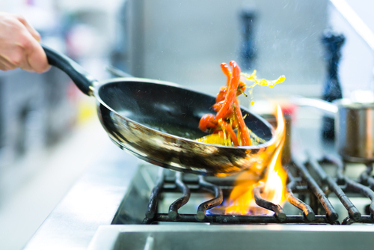The plastids, also called plastos, are typical organelles of plant cell. Despite forming different groups, in general, plastids have the presence of a double membrane, an internal system of membranes, in addition to their own genetic material and ribosomes. Among its functions, we can mention the carrying out photosynthesis, storage of substances and synthesis of amino acids and fatty acids.
→ Plastid structure
Plastids are organelles that come in different shapes and sizes. As stated earlier, they are surrounded by two membranes, which are lipoprotein, and inside is the stroma, where membranes that form the thylakoids, structures in the form of flattened bags. It is also in the stroma that the genetic material (DNA and RNA) and the ribosomes, in addition to enzymes needed to carry out some processes.
In some plastids, there are pigments or some accumulated substances. The presence or absence of pigments and substances allows classifying this organelle into different groups.
→ Plastid classification
We can classify plastids into three large groups, using the presence of pigments as a criterion.
⇒ Chloroplasts: Chloroplasts are the best known plastids. They have a large amount of chlorophyll in the thylakoid membrane (green pigment), act in photosynthesis and are found mainly in leaves. In the leaf parenchyma, for example, cells may have 20 to 60 chloroplasts.
Do not stop now... There's more after the advertising ;)
⇒ The chloroplast of angiosperms has a discoid shape, a double membrane surrounding it, and thylakoids arranged in piles. The thylakoid piles are called grain or money,and its set is called, respectively, of grains or granum. The thylakoids that form the piles are called granule thylakoids, and those that interconnect the stacks are called stromal thylakoids.
⇒ Chromoplasts: Chromoplasts are plastids that stand out for the presence of pigments carotenoids, responsible for colors from yellow to red. This organelle is not related to photosynthesis and is more related to the attraction of pollinators and dispersers. It can originate from chloroplasts, when chlorophyll and thylakoids are reduced.
⇒ Leukoplasts:They are plastids in which there is an absence of pigment. In these organelles, we observe the accumulation of some substances like starch and proteins. The plastids that accumulate starch are called amyloplasts, and those that store protein are called proteinoplasts.
→ The proplasts
Proplastids are small organelles that are colorless and have poorly developed thylakoids. They are the precursors of all plastids., therefore, are responsible for the formation of chloroplasts, chromoplasts and leucoplasts.
By Ma. Vanessa Sardinha dos Santos
Would you like to reference this text in a school or academic work? Look:
LESME, Adriano. "What is plastid? "; Brazil School. Available in: https://brasilescola.uol.com.br/o-que-e/biologia/o-que-e-plastidio.htm. Accessed on June 29, 2021.



